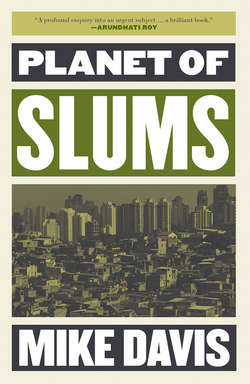Читать книгу Planet of Slums - Mike Davis - Страница 8
На сайте Литреса книга снята с продажи.
One The Urban Climacteric
ОглавлениеWe live in the age of the city. The city is everything to us – it consumes us, and for that reason we glorify it.
Onookome Okome 1
Sometime in the next year or two, a woman will give birth in the Lagos slum of Ajegunle, a young man will flee his village in west Java for the bright lights of Jakarta, or a farmer will move his impoverished family into one of Lima’s innumerable pueblos jovenes. The exact event is unimportant and it will pass entirely unnoticed. Nonetheless it will constitute a watershed in human history, comparable to the Neolithic or Industrial revolutions. For the first time the urban population of the earth will outnumber the rural. Indeed, given the imprecisions of Third World censuses, this epochal transition has probably already occurred.
The earth has urbanized even faster than originally predicted by the Club of Rome in its notoriously Malthusian 1972 report Limits of Growth. In 1950 there were 86 cities in the world with a population of more than one million; today there are 400, and by 2015 there will be at least 550.2 Cities, indeed, have absorbed nearly two-thirds of the global population explosion since 1950, and are currently growing by a million babies and migrants each week.3 The world’s urban labor force has more than doubled since 1980, and the present urban population – 3.2 billion – is larger than the total population of the world when John F. Kennedy was inaugurated.4 The global countryside, meanwhile, has reached its maximum population and will begin to shrink after 2020. As a result, cities will account for virtually all future world population growth, which is expected to peak at about 10 billion in 2050.5
